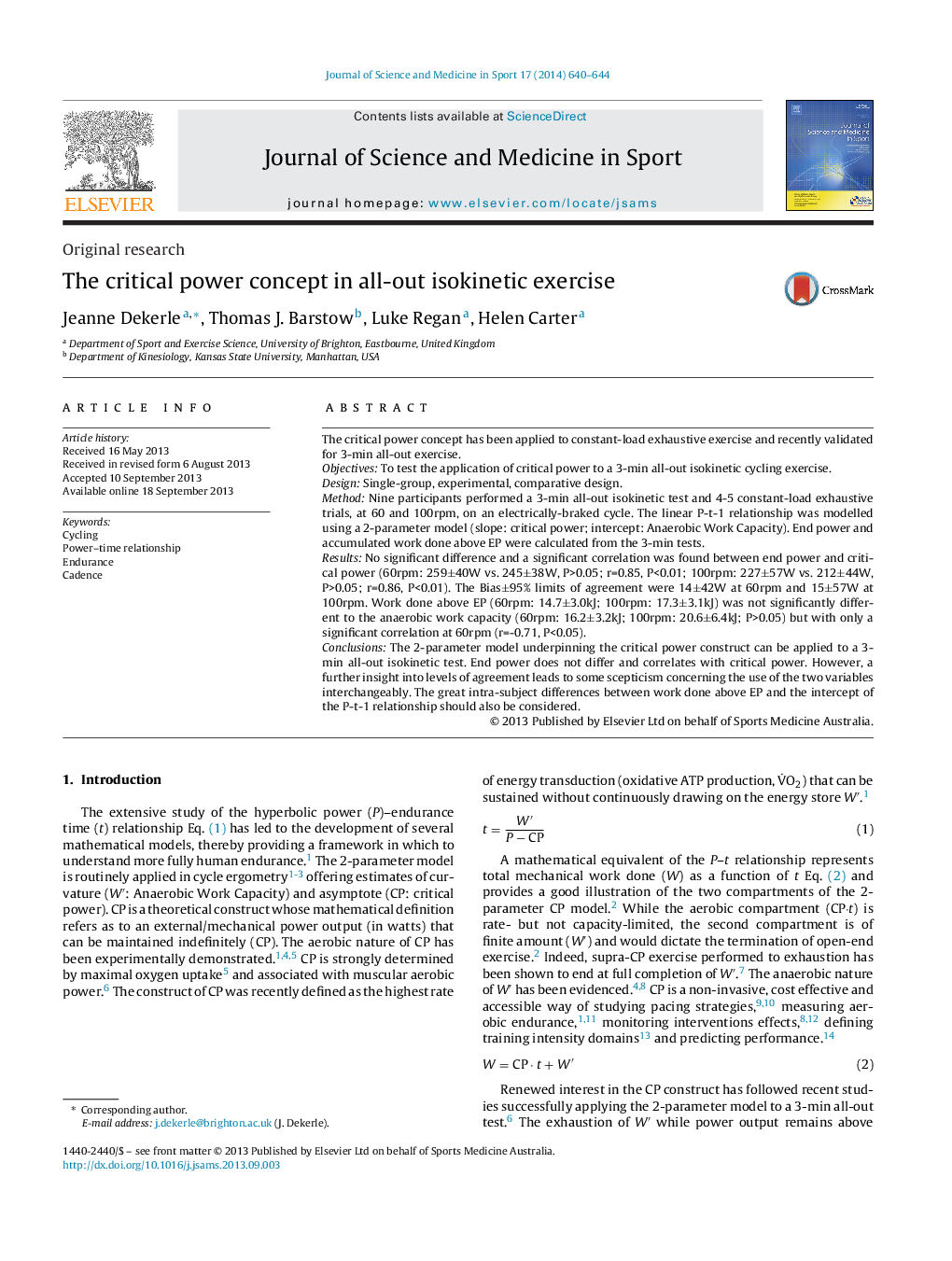| کد مقاله | کد نشریه | سال انتشار | مقاله انگلیسی | نسخه تمام متن |
|---|---|---|---|---|
| 2701419 | 1144438 | 2014 | 5 صفحه PDF | دانلود رایگان |
The critical power concept has been applied to constant-load exhaustive exercise and recently validated for 3-min all-out exercise.ObjectivesTo test the application of critical power to a 3-min all-out isokinetic cycling exercise.DesignSingle-group, experimental, comparative design.MethodNine participants performed a 3-min all-out isokinetic test and 4-5 constant-load exhaustive trials, at 60 and 100rpm, on an electrically-braked cycle. The linear P-t-1 relationship was modelled using a 2-parameter model (slope: critical power; intercept: Anaerobic Work Capacity). End power and accumulated work done above EP were calculated from the 3-min tests.ResultsNo significant difference and a significant correlation was found between end power and critical power (60rpm: 259±40W vs. 245±38W, P>0.05; r=0.85, P<0.01; 100rpm: 227±57W vs. 212±44W, P>0.05; r=0.86, P<0.01). The Bias±95% limits of agreement were 14±42W at 60rpm and 15±57W at 100rpm. Work done above EP (60rpm: 14.7±3.0kJ; 100rpm: 17.3±3.1kJ) was not significantly different to the anaerobic work capacity (60rpm: 16.2±3.2kJ; 100rpm: 20.6±6.4kJ; P>0.05) but with only a significant correlation at 60rpm (r=-0.71, P<0.05).ConclusionsThe 2-parameter model underpinning the critical power construct can be applied to a 3-min all-out isokinetic test. End power does not differ and correlates with critical power. However, a further insight into levels of agreement leads to some scepticism concerning the use of the two variables interchangeably. The great intra-subject differences between work done above EP and the intercept of the P-t-1 relationship should also be considered.
Journal: Journal of Science and Medicine in Sport - Volume 17, Issue 6, November 2014, Pages 640–644
